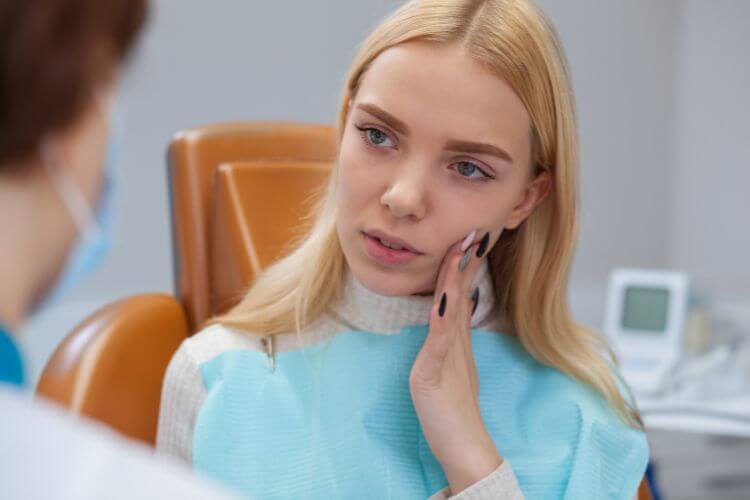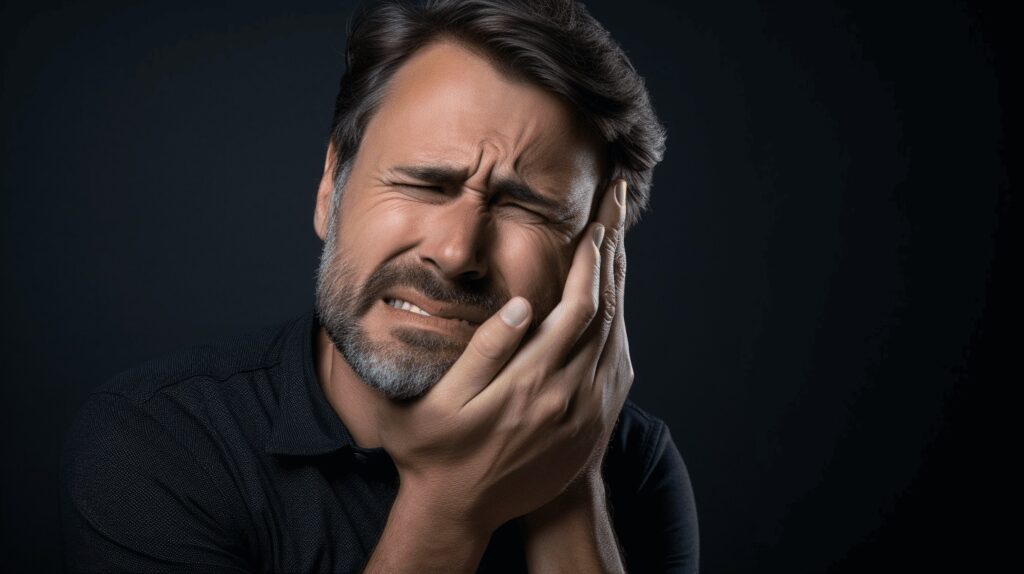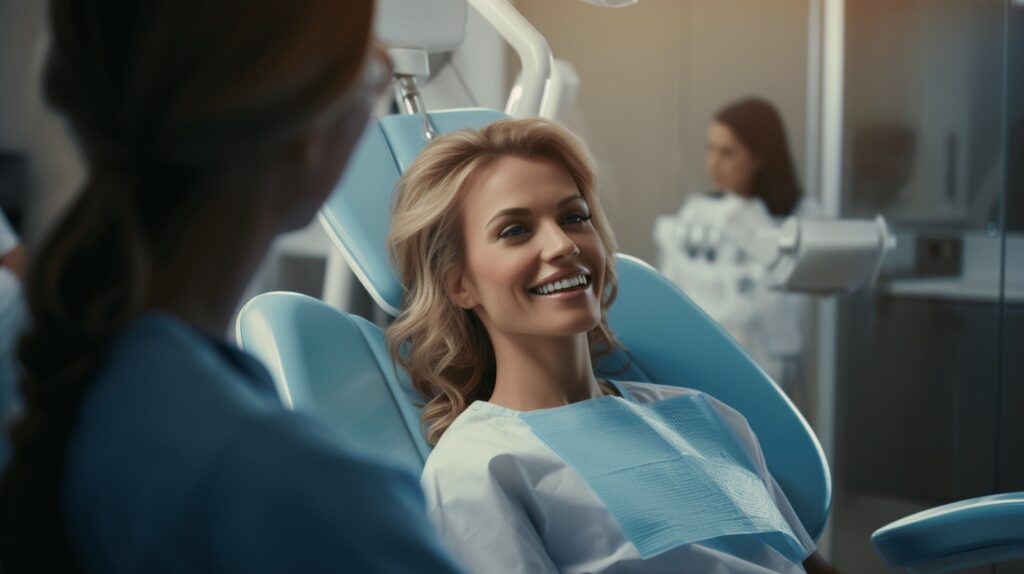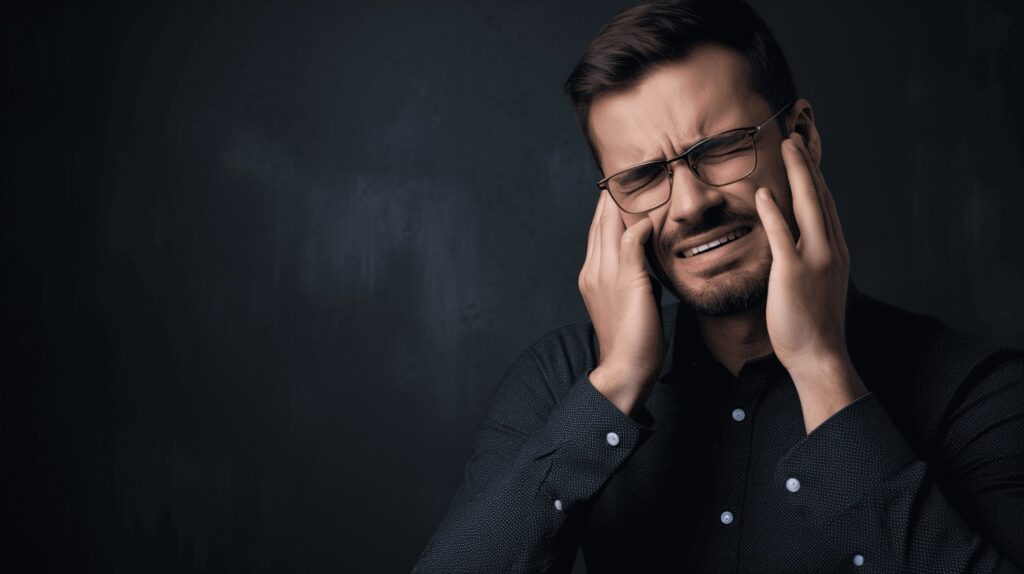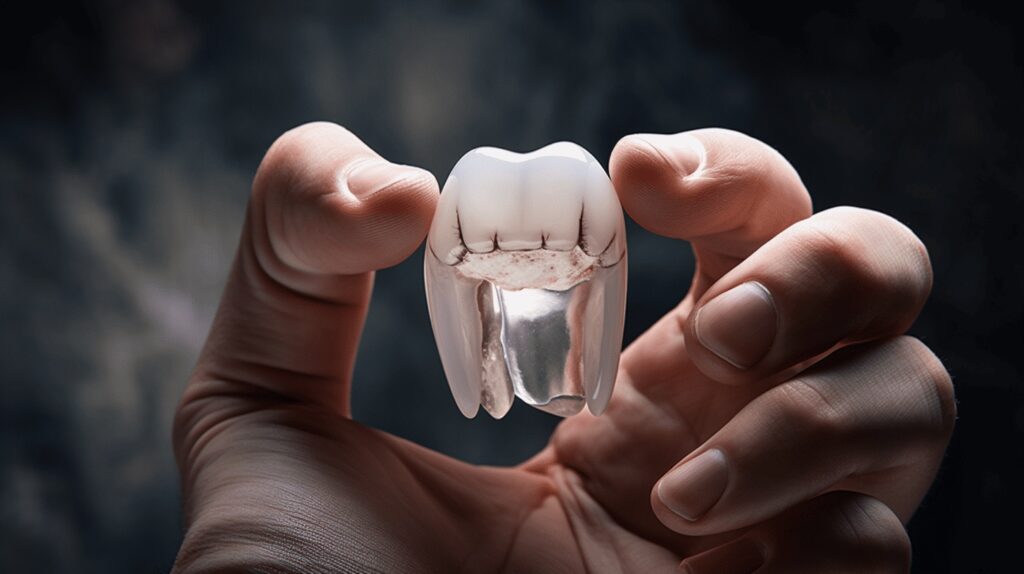So you were blissfully enjoying your favorite dessert when, out of nowhere, you reached a no-man’s land on your tooth and felt a sharp pain. Sounds familiar?
We all have had our fair share of dental emergencies, be it a loose tooth, a chipped tooth, or more severe conditions like tooth loss. These are all rightfully dreaded and can cause a lot of panic if you’re not adequately prepared or informed.
This is the right place if you’ve ever been in such a situation (or even if you haven’t, it’s better safe than sorry!). Our guide dives deep into the impact of dental emergencies, the readiness of patients to visit dentists in the wake of the pandemic and sneak peeks into the global dental health statistics.
But first, let’s understand how impactful dental emergencies can be. Did you know that dental emergencies are not just about the instant discomfort? They carry a much larger socio-economic picture behind them, making it crucial for us to understand and address them promptly.
Table of Contents
Impact of Dental Emergencies
One unpleasant event that could potentially disrupt your day to day activities is experiencing a dental emergency. Imagine a sudden, sharp toothache kicking in while the kids are prepping for school or an unexpected chipped tooth occurring during a heavenly lunch date 😱.
Dental emergencies can act like unwanted alarms, demanding immediate attention, which can lead to unforeseen consequences. In this section, we will explore how dental emergencies can impact various aspects of our daily life, specifically regarding loss of school hours, the global spread of oral diseases, and an increase in emergency department visits.
Loss of School Hours
Have you ever thought about how many school hours are lost each year due to unforeseen dental emergencies? Well, believe it or not, it’s a whopping 34 million! Yes, that’s the scale of the impact. Here’s how it happens:
- A child starts to experience a toothache which disrupts their ability to concentrate on schoolwork.
- The pain intensifies, leading to the immediate need for a dentist’s appointment.
- As these appointments usually occur during school hours, learning time is lost.
It’s clear to see how these unforeseen situations add up, leading to a substantial loss of school hours each year.
Global Spread of Oral Diseases
Next, let’s touch on how oral diseases are spreading globally. Statistics indicate that about 45% of the world population, that’s roughly 3.5 billion people, suffer from various oral diseases. These can range from cavities and periodontal diseases to oral cancer. This vast number indicates how dental emergencies stemming from oral diseases have a global impact.
Emergency Department Visits
Finally, when a major dental emergency strikes, a visit to the Emergency Department (ED) becomes inevitable. In 2014, there were 2.43 million ED visits for nontraumatic dental conditions. This staggering number highlights how dental emergencies can contribute to the congestion of our already overburdened emergency departments.
As we’ve seen through these insights, the impact of dental emergencies extends beyond personal discomfort or pain. They result in lost educational opportunities, contribute to the spread of oral diseases worldwide, and put a strain on healthcare systems. Hence, focusing on oral health and preventive care is not just about maintaining stunning smiles 😁 but it’s also about ensuring our community’s overall well-being.
Patient Readiness to Visit Dentist During Pandemic
Emerging from the shadows of a challenging year, as we tentatively move towards a new normal, managing our health, both physical and oral, remains paramount.
😷 Now, with the numbers rolling in, we’re starting to see how the pandemic has shaped patient behavior, specifically in relation to dental appointments. When we dig deep into the data, here’s what we find:
- A whopping 63% of patients are ready and willing to visit their dentist during the pandemic. It’s heartening to see so many individuals prioritizing their oral health amidst these unsettling times.
- Meanwhile, we have another set of stalwarts who have already taken the plunge! Yes, about 27% of patients have recently visited their dentist, not letting the fear of the pandemic deter them from maintaining their pearly whites.
- At the same time, a minor yet significant percentage, 5% to be precise, are cautiously waiting for that much-needed reassurance. This portion reflects those who are willing but hesitant, waiting for trust-building gestures like clear communication about enhanced safety protocols.
- Lastly, we have another 5% of folks who are being ultra-cautious, adopting a wait-and-watch approach until the scenario is perceived as perfectly safe.
These numbers present an insight into the psyche of patients during this unprecedented time. They reveal that a majority of people have acclimatized to the new world order and are ready to prioritize their dental health, cognizant of the fact that neglecting it now could lead to bigger issues down the line.
But for those in the waiting lines, now might be a good time to take a leaf out of the 27%’s book who’ve recently visited their dentist. After all, with enhanced safety standards in dental clinics, a dentist’s office could be a safe haven in these tumultuous times. So, muster up your courage, schedule that overdue appointment, and let’s flash those healthy, stunning smiles at the world! 🦷+🪥=😁
Remember, the pandemic has changed a lot of things, but our commitment to our health should remain unwavering. So, whether you fall into the 63%, the cautious 5%, or somewhere in between, it’s time. Time to safely open up, time to trust the process, and yes, time to visit the dentist.
Oral Health Statistics and Dental Avoidance
When it comes to oral health, the statistics can be quite alarming. Often, we underestimate the importance of regular dentist visits and proper oral hygiene, leading to various dental issues. This section will shed light on some prevalently overlooked problems like untreated dental caries, irregular dental check-ups, and tooth decay prevalence.
Untreated Dental Caries
Did you know that an astonishing 1 in 4 adults aged 20-44 has untreated dental caries? 😱 Yes, that’s right! Dental caries, also known as cavities, is the destruction of your tooth enamel, the hard, outer surface of your teeth. It’s a common myth that cavities only occur in children when in reality, decay can happen at any age. Hence, consistent dental care and routine check-ups are crucial.
Irregular Dental Check-ups
When was your last visit to the dentist? According to statistics, a staggering 42% of adults don’t visit the dentist regularly. 😦 That’s nearly half of us! Regular dental check-ups are not just about keeping your smile perfect. They play a pivotal role in maintaining overall oral health, preventing decay, gum disease, oral cancer, and more.
Tooth Decay Prevalence
Speaking of decay, did you know that tooth decay is so prevalent that it affects a shocking 90% of adults aged between 20 and 64 years?😳 This is alarming as untreated tooth decay can lead to severe pain, infection, and even tooth loss.
Readers, let’s remember that oral health significantly impacts our overall health. It’s more than just achieving that sparkling Hollywood smile. Dental conditions can have far-reaching effects on various aspects of our life, impacting our work, self-esteem, and even our relationships. Let’s make oral health a priority; after all, prevention is always better than cure. 😃
Emergency Room Visits and Injuries
General Statistics
We all understand the significance of emergency rooms, don’t we? With healthcare services available round-the-clock to treat injuries or sudden illnesses, emergency rooms serve as the frontline warriors of our healthcare system. 🏥 But, have you ever wondered about how many people visit the emergency room each year and, more importantly, for what reasons?
Let’s dig into some compelling stats.
- A staggering number, over 2 million of these visits, are caused by dental-related concerns – that’s somewhere between 1.15% and 2.5% of all emergency room visits. Yes, that’s right! When most people think about emergency rooms, they might visualize broken bones or heart attacks, but dental-related complaints are surprisingly common. In fact, untreated tooth decay or gum issues can cause severe pain and possibly lead to more serious health issues if untreated.
Don’t be shocked! These numbers serve as a stark reminder that we should not neglect our dental health. It’s crucial to schedule routine check-ups and procedures that can help you avoid the discomfort and hassle of an emergency room visit.
Child Injuries
Continuing on this journey of discovery, let’s shift our focus to our little ones: children. Kids, by nature, are more prone to injuries due to their exploratory mindset and endless curiosity. 🧒 Nevertheless, would you have guessed that one in five 12-year-olds suffers an injury to their permanent teeth? Yes, it happens! And, naturally, most of these incidents also end up in an emergency room visit.
Understanding this risk emphasizes the importance of preventative measures, like teaching children the importance of wearing protective gear while playing sports, avoiding hard and sticky candies, and being cautious while eating hard fruits like apples. Regular dental check-ups are also essential, so any early signs of trouble can be caught and treated before turning into emergencies.
In a nutshell, the emergency room shouldn’t be a ‘regular’ check-up place; instead, it’s a safety net for when things go south. Thus we should strive to avoid these visits by advocating for and practicing healthier habits. Remember, prevention is always better than cure! 💭
Dental Care Amid COVID-19 Pandemic
Let’s face it; the COVID-19 pandemic dramatically changed the world 🌎 and guess what aspect of our lives was uniquely impacted? Dental Care. We witnessed an alarming 75% decrease in dental services nationwide during the early phase of the pandemic. We questioned: should we visit our dentist? Is it safe?
Dental health💉, though often overlooked, is a crucial part of our overall well-being. Disturbingly, 77 million adults in the US lack dental insurance, making access to oral care remarkably difficult during this challenging time. Here is a closer examination of why dental care took such a hit and how we can uphold our dental hygiene amidst this pandemic.
The Impact on Dental Services
At the heat of the pandemic, most dental practices had to close their doors. Here’s why:
- The threat of transmission: Dental procedures often involve aerosols, droplets, and close contact that could potentially spread the virus.
- Conserving Personal Protective Equipment (PPE): During the early days of the pandemic, there was a considerable shortage of PPE. To conserve these necessary resources for the frontline health care workers fighting the pandemic, many dental procedures were deferred.
However, despite the challenges, our dental health care professionals have been super resilient and adaptive, offering safe and efficient services in these trying times.
Maintaining Dental Health at Home
While access to dental procedures may be limited, there are many ways we can keep our chompers healthy right in the comfort of our homes:
- Proper oral hygiene routine: Brush twice a day, floss regularly, and use a mouthwash. These are your first lines of defense against dental issues.
- Healthy diet: Reduce sugar intake as it can lead to tooth decay. Include more fruits, vegetables, and dairy products which are beneficial for your teeth.
- Be vigilant: If you notice any abnormalities like swelling, pain, or ulcers in your mouth, promptly reach out to a healthcare professional.
💡Remember, oral health is integral to our general health. Don’t let the pandemic deter you from taking care of your teeth and gums.
Dental care amidst the COVID-19 pandemic has indeed been challenging. Yet, with caution, adaptation, and the right home practices, we can keep oral health risks at bay until we can all safely smile 😄 at our dental health care professionals once again.
Managing Dental Emergencies
There are few health-related emergencies quite as panic-inducing as a sudden dental issue. Twinging pains, throbbing aches, sudden sensitivity, or even tooth loss – it’s enough to send anyone into a spiral. No sweat, we’re here to guide you through such rough times. Here’s how you deal with unexpected dental emergencies.
Immediate Actions
Imagine this: it’s Sunday afternoon, you’re munching on your favorite healthy snack and CRUNCH! There goes a painful tooth! 😰 First things first, don’t lose your head! Here’s what comes next:
- Rinse your mouth gently with warm water. This can help clean the area and minimize infection.
- Over-the-counter pain medication can be used to control the ache. Just remember not to apply the medicine directly onto your gums because it can burn the gum tissue.
- Use a cold compress to reduce any swelling and numb the irritating throbbing. This method can help manage the situation until you can see your dentist.
For a full guide on dealing with such incidents, feel free to visit our page on How to Handle Dental Emergencies.
Oral Hygiene
Prevention, as they say, is better than cure. The cornerstone of this prevention: good oral hygiene. Sound oral hygiene habits can reduce the risk of getting into dental emergencies. They, trust us, are a real pain in the… well, mouth. 😊
Clear the picture with some bullet points, shall we?
- Brushing and flossing daily, without fail, is pivotal.
- Use an antibacterial mouthwash daily. It helps to reduce bacteria and control plaque.
- Regular visits to the dentist are a must. These check-ups can spot and fix potential problems early.
Protective Measures
We can never be sure about when a dental emergency might strike. Until it does, why not arm ourselves in the face of potential dental doom?
Protection comes in various forms:
- Mouthguards: Ideal and necessary when playing sports. They protect teeth from being knocked out or chipped.
- Regular cleanings and check-ups: This helps to identify dental issues early before they turn into an emergency.
- Fluoride treatments: These strengthen your tooth enamel and can prevent tooth decay.
Who knew fighting dental drama could be so simple? Remember, knowing what to do when a dental emergency strikes can save your smile. So, breathe easy and crunch on! 🦷 😁
Conclusion
Dental emergencies are unforeseen circumstances that can affect anyone, at any time. But beyond immediate solutions, regular check-ups and conservative dental treatments should be prioritized to prevent such instances from taking place.
At Wilshire Smile Studio, we’re committed to helping our community handle these emergencies while providing top-notch dental care. Our experienced team is trained to handle various emergencies, while our state-of-the-art facilities ensure quick and efficient treatments.
Emergencies might be unpredictable, but your choice of dentist doesn’t have to be. Choose a team that’s experienced, empathetic, and focused on delivering the healthiest, most beautiful smiles—like us at Wilshire Smile Studio!
Remember, maintaining oral health is a long-term commitment. It goes beyond just reacting to emergencies. It’s about regular dental visits, timely treatment, and maintaining good oral hygiene. And with expert dental practices like Wilshire Smile Studio, achieving excellent oral health becomes a comfortable and stress-free experience!
So, don’t let dental emergencies cause unnecessary stress. Be prepared, seek immediate professional help, and prioritize your oral health. Your smile is worth it!
Book your free consultation with us online or call (323) DENTIST (323-336-8478) today.
Frequently Asked Questions
1. What are common dental emergencies and how should they be dealt with?
Common dental emergencies include toothaches, knocked-out teeth, broken or cracked teeth, and jaw injuries. In case of a toothache, rinse your mouth with warm water and use dental floss to remove any food particles. For a knocked-out tooth, try to place it back in the socket or keep it in a glass of milk and seek immediate dental care. Broken or cracked teeth should be rinsed with warm water and cold compresses applied. Jaw injuries require immediate medical attention.
2. Should I visit the dentist for a minor toothache?
If you experience a minor toothache, you can try rinsing your mouth with warm water and flossing gently to remove any trapped food particles. Over-the-counter pain relievers can also help. If the pain persists for more than a day or becomes severe, it is recommended to visit a dentist, as it could be a sign of a more serious underlying issue.
3. What should I do if my tooth gets knocked out?
If your tooth gets knocked out, handle it by the crown and avoid touching the root. Rinse the tooth gently with water. If possible, try to reposition the tooth back into the socket, but be careful not to force it. If that’s not possible, store the tooth in a glass of milk or saline solution and seek immediate dental care, as there is a higher chance of saving the tooth if treated within an hour.
4. How can I prevent dental emergencies?
To prevent dental emergencies, maintain good oral hygiene by brushing twice a day, flossing daily, and visiting your dentist for regular check-ups. Avoid biting or chewing on hard objects, wear a mouthguard during sports activities, and use scissors, not your teeth, to open packages or remove tags.
5. What should I do if I have a broken or cracked tooth?
If you have a broken or cracked tooth, rinse your mouth with warm water to clean the area. Apply a cold compress to reduce swelling and take over-the-counter pain medication if needed. It is important to visit a dentist as soon as possible for proper evaluation and treatment. Avoid eating or drinking anything too hot or cold, and refrain from biting or chewing on that side of your mouth.



